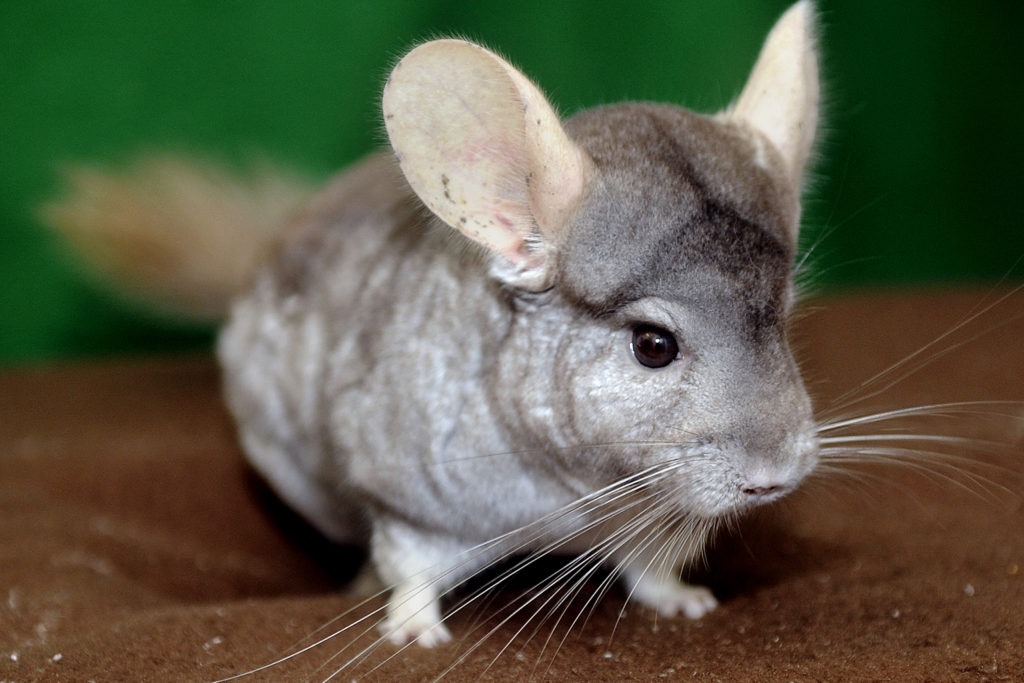Smart Guide to Different Types of Hamsters: Discover the Best Pets for 2025!
Hamsters have long been cherished as adorable and easy-to-care-for pets, making them particularly popular among families with children. In 2025, pet ownership trends continue to evolve, and understanding the diverse universe of hamsters is essential if you're considering one as a companion. Each hamster species offers unique characteristics, needs, and care requirements. This guide will help you navigate the world of hamsters by detailing the various types you can adopt, their specific care needs, and how each breed can form delightful companionships.
From Syrian hamsters' friendly personalities to the small and speedy Roborovski hamsters, the variety within the hamster species is vast and fascinating. Adopting a pet hamster is not just about choosing any hamster; understanding their nature, behavior, and nutritional needs is vital to their well-being and your enjoyment as a pet owner. This guide will cover essential aspects of hamster care, including habitat arrangements, proper diets, behavior insights, and fun activities that enrich their lives and yours.
As you delve into this guide, expect to learn not only about specific hamster breeds but also essential tips for hamster care, the importance of socialization, and how to create a harmonious living space for your new furry friend. By the end of this article, you should feel confident in choosing the right hamster for your family and understand what it takes to provide them with a happy, healthy life.
Understanding Syrian and Dwarf Hamsters: Key Characteristics
Building on the fundamentals of hamster care, we explore two of the most popular hamster types: Syrian hamsters and Dwarf hamsters. Both breeds bring unique traits to the table, making them suitable for different types of pet owners.
Meet the Syrian Hamster
Syrian hamsters, often known for their friendly temperament and larger size, are known to be one of the most popular pet hamster breeds. They can grow up to approximately 6-8 inches in length, making them larger compared to their dwarf counterparts. Syrian hamsters prefer to live alone, as they can display territorial behavior, particularly around other hamsters. This breed typically enjoys regular interaction with their owners, making them perfect for families looking for a pet that thrives on social engagement.
When it comes to care, Syrian hamsters benefit from spacious cages where they can explore and exercise. A quality habitat is essential, as it influences their health and happiness significantly. A well-furnished cage can include tunnels, wheels, and cozy spots for nesting. Understanding their dietary needs is equally vital, as a balanced diet consisting of high-quality hamster pellets, fresh fruits, and vegetables ensures they are thriving.
Featuring Dwarf Hamsters
Dwarf hamsters are a group that includes several kinds, such as Roborovski, Campbell's, and Winter White hamsters, each presenting their idiosyncrasies. Typically smaller than Syrian hamsters, Dwarf species range from 3.5 to 4.5 inches long. Unlike Syrian hamsters, some Dwarf hamsters can live together if introduced correctly; however, it is essential to keep a close eye on their interactions to prevent territorial disputes. This social aspect allows for an engaging and lively environment when caring for multiple Dwarfs.
A unique feature of Dwarf hamsters is their playful nature. They often enjoy exploring their surroundings, making it crucial to provide various toys and exercises within their habitat. Engaging them with a hamster wheel or tubes can promote necessary exercise while keeping them entertained. Furthermore, Dwarf hamsters also require a balanced diet similar to that of the Syrian hamster. Including protein-rich treats occasionally helps maintain their vitality.
Assessing Hamster Species: Camaraderie and Care
Understanding the dynamics of various hamster species extends beyond basic care to their interaction and social needs. Moving forward, we will delve into other hamster species and how they fit into the pet landscape.
Roborovski Hamster: The Speedster
Roborovski hamsters are renowned for their speedy nature and small size. These hamsters are ideal for observers, as they tend to scurry around their habitat quickly, showcasing their agility. They usually require more space to roam, given their energetic disposition. Compared to Dwarf hamsters, Robos are less likely to engage in social interactions with humans but can thrive in pairs if introduced correctly.
Winter White and Campbell's Dwarf Hamsters
Both Winter White and Campbell's Dwarf hamsters possess their characteristics that endear them to pet owners. Winter White hamsters are known for their seasonal color changes, transitioning from brownish-gray to white during colder months. Their friendly demeanor makes them great companions, although proper handling is essential to prevent stress.
Campbell's Dwarf hamsters, on the other hand, are social animals that can benefit from companionship. However, they should be housed with bonded individuals to reduce territorial behavior. All Dwarf hamsters thrive on play and require engaging environments to keep them stimulated.
Exploring Unique Hamster Varieties: Breed-Specific Care
Having discussed the major groups of hamsters, let's now take a closer look at some of the less common but amazing hamster breeds that exist, including the Chinese hamster and the Black Bear hamster. Each offers a unique perspective for potential hamster owners.
The Elusive Chinese Hamster
Chinese hamsters, with their long tails and slender bodies, offer distinct physical characteristics that set them apart from the more common varieties. They are playful and curious, but they typically prefer more space, making a spacious habitat important. Given their social behavior, they often enjoy the company of their toys and will appreciate a variety of activities within their cage.
Black Bear and Teddy Bear Hamsters
The Black Bear hamster is another unique breed that is truly captivating. They share similarities with Syrian hamsters in size and temperament but have a striking black coat. These hamsters are gentle and like to interact with their owners, making them suitable for families. Furthermore, Teddy Bear hamsters are simply a long-haired variety of Syrian hamsters. They are fluffier and require regular grooming, given their luxurious coats. Understanding these differences will help you choose the right breed based on your preferences and lifestyle.
Hamster Care Essentials: Habitat, Diet, and Enrichment
With a better understanding of the different hamster species, it's time to explore the integral components of providing optimal hamster care. This section will discuss how to create the ideal living environment, focusing on diet, habitat, and enrichment.
Creating the Perfect Hamster Habitat
Designing your hamster's habitat can make a significant difference in their overall well-being. Ideal cages come equipped with multiple levels, tunnels, and items like the hamster wheel that encourage exercise. Substrate material, such as aspen shavings or paper-based bedding, provides a safe and comfortable environment. It's vital to maintain proper hygiene by cleaning their habitat regularly to prevent health issues.
Hamster Diet and Nutrition
Every hamster requires a balanced diet to thrive, which includes high-quality hamster pellets designed to support their health. Fresh vegetables and occasional fruits can be provided as treats, although moderation is key. Always research safe food options and avoid any toxic items to ensure your pet remains healthy. Additionally, keep a close eye on their water intake, as hydration is crucial for their health.
Interacting with Your Hamster: Training and Socialization
Creating a bond with your hamster hinges on understanding their behavior, social needs, and interaction patterns. Quality interaction promotes a stronger bond between pet and owner, leading to a more fulfilling pet ownership experience.
Socializing Your Hamster
Socialization is an essential aspect of hamster ownership. Introducing your hamster to gentle handling from a young age helps them become accustomed to human interaction. Always approach your hamster softly and avoid sudden movements, as this can cause stress. Spend time with them during playtime to foster a trusting relationship.
Training Techniques and Bonding Strategies
You can train your hamster to follow simple commands or perform tricks using positive reinforcement methods, such as treats. This process not only engages your hamster mentally but also strengthens the bond you share. Always observe their responses and adjust your approach accordingly. Creating a routine helps your hamster feel more secure in their environment, leading to less stress and anxiety in the process.
Q&A: Your Hamster Care QuestionsAnswer!
How often should I clean my hamster's cage?
Cleaning should occur at least once a week, with spot cleaning occurring every few days to maintain hygiene. Pay attention to the substrate's condition and replace it as needed.
What is the best diet for my hamster?
A balanced diet includes high-quality pellets, fresh vegetables, and occasional treats. Always research before introducing new foods.
Can hamsters live together, and if so, how should I introduce them?
Some Dwarf hamster breeds can live together, but careful introductions in neutral spaces are essential to prevent territorial disputes.
What are some common signs of a healthy hamster?
A healthy hamster displays active behavior, maintains a healthy weight, has a smooth and clean coat, and exhibits curious behavior.
How can I enrich my hamster's environment?
Provide various toys, tunnels, and exercise equipment. Rotating items can keep the environment stimulating to prevent boredom.

In conclusion, understanding individual hamster breeds and their specific needs is essential for any potential hamster owner in 2025. Whether you opt for a friendly Syrian hamster or a lively Roborovski, every breed offers unique joys and challenges. By providing an optimal habitat, a balanced diet, and engaging interaction, you can ensure that your hamster leads a happy, healthy life.

For more in-depth information on hamster care and species, check out these articles: Hamster Species Characteristics and Complete Hamster Care Guide.
